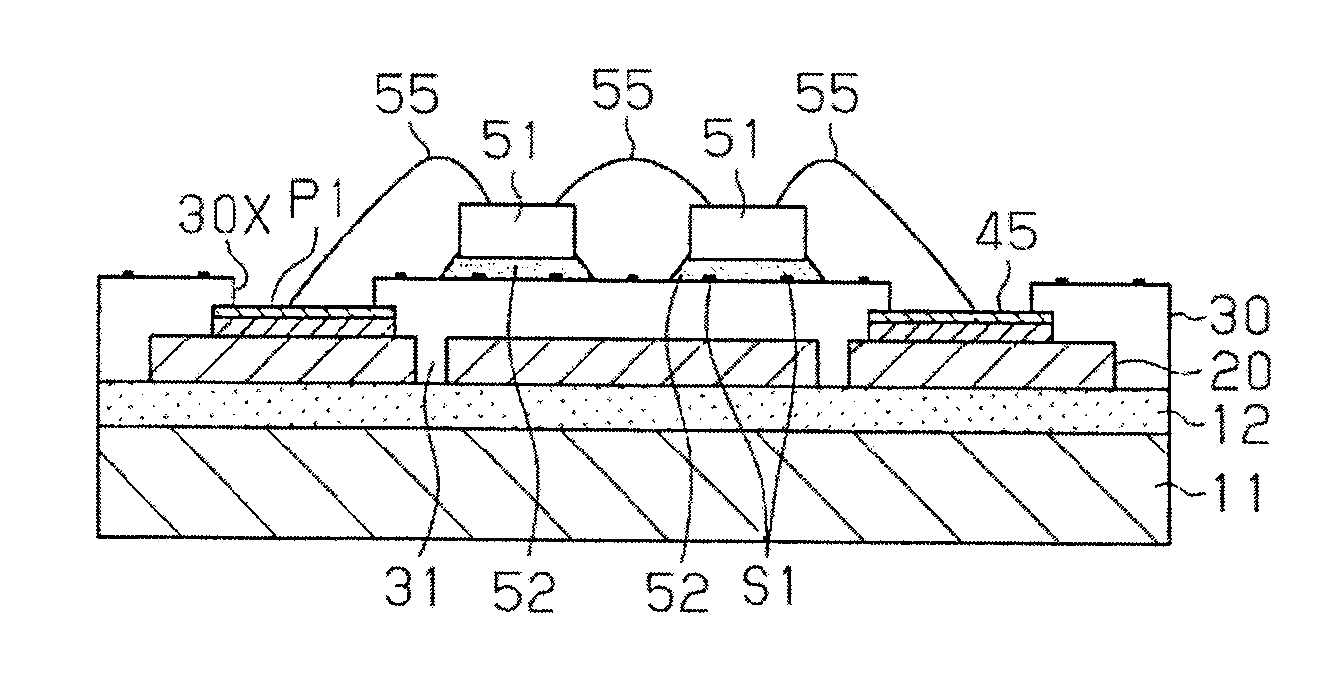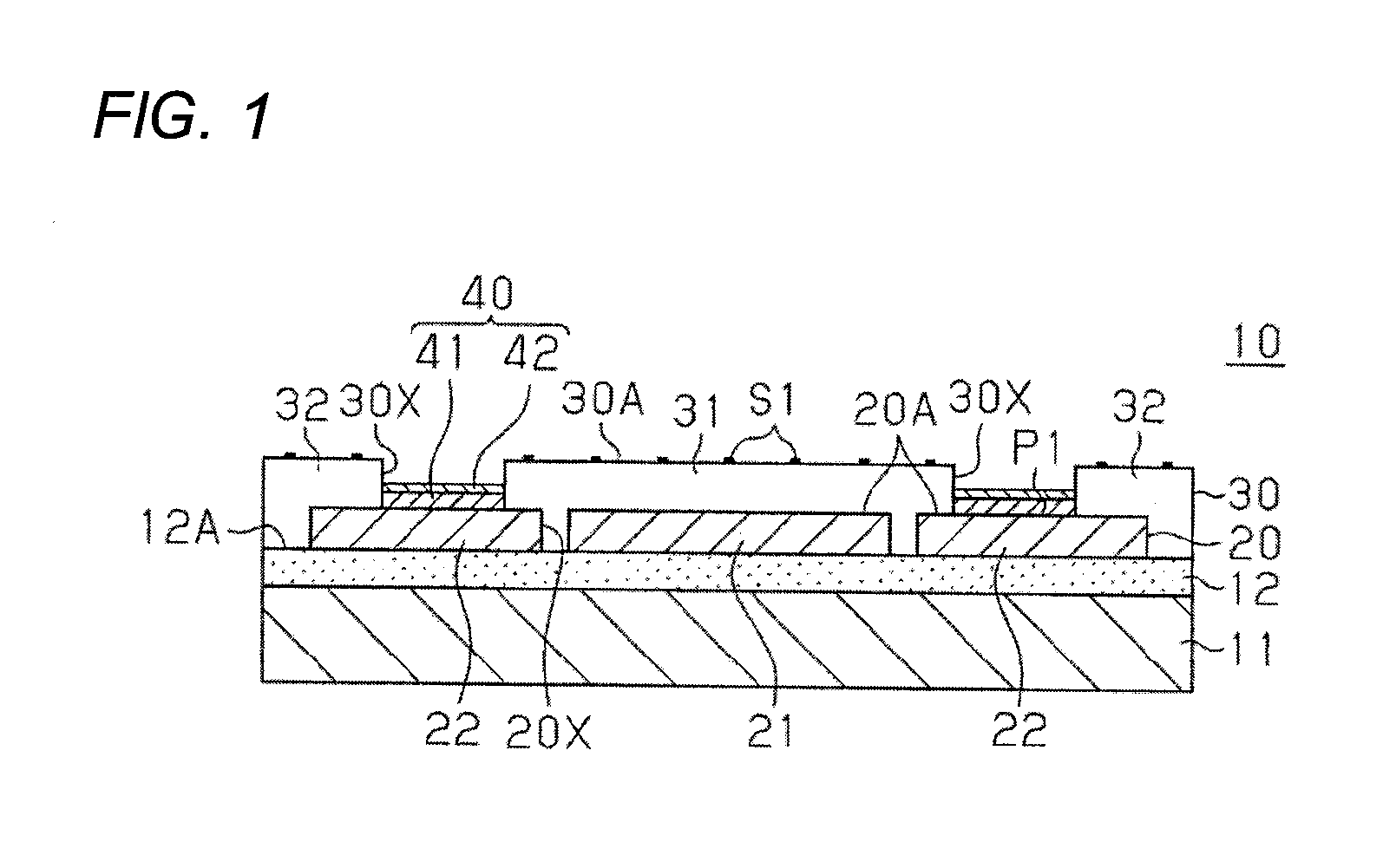Wiring board and light emitting device
a light-emitting device and wiring board technology, applied in the direction of solid-state devices, printed circuit aspects, non-metallic protective coating applications, etc., can solve the problems of low adhesion strength between the adhesive agent (die-bonding material) for fixing the light-emitting elements and the reflecting layer in the lighting module, and the light-emitting elements are apt to be separated from the reflecting layer, so as to achieve the effect of improving the adhesion strength between the reflecting layer
- Summary
- Abstract
- Description
- Claims
- Application Information
AI Technical Summary
Benefits of technology
Problems solved by technology
Method used
Image
Examples
first embodiment
[0022]A first embodiment will be described below in accordance with FIGS. 1 to 4, FIGS. 5A to 5D and FIGS. 6A to 6C.
[0023]First, the structure of a wiring board 10 will be described in accordance with FIGS. 1 to 3.
[0024]As shown in FIG. 1, the wiring board 10 has a heat sink 11, an insulating layer 12 formed on the heat sink 11, wiring patterns 20 formed on the insulating layer 12, an insulating layer 30 covering a part of the wiring patterns 20, and metal layers 40 formed on the wiring patterns 20.
[0025]For example, the heat sink 11 is a flat plate substantially shaped like a rectangle in plan view. For example, copper (Cu), a Cu based alloy, iron-nickel (Fe—Ni), an Fe—Ni based alloy, aluminum (Al) or an Al based alloy etc. may be used as the material of the heat sink 11. The thickness of the heat sink 11 may be set to be, for example, about 200 to 2,000 μm.
[0026]The insulating layer 12 is formed to cover the whole of an upper surface of the heat sink 11. In other words, the heat s...
second embodiment
[0097]A second embodiment will be described below with reference to FIG. 10, FIGS. 11A to 11D and FIGS. 12A to 12D. Structures of an insulating layer 30 and metal layers in the embodiment are different from those in the first embodiment. Different points from the first embodiment will be described mainly.
[0098]As shown in FIG. 10, a plurality of metal layers 45 are formed on wiring patterns 20 (wiring patterns 22). Each of the metal layers 45 is substantially formed, for example, into a circular shape in plan view in the same manner as the metal layer 40. Examples of the metal layer 45 may include a metal layer in which an Ni layer and an Au layer are laminated sequentially in this order on an upper surface 20A of the wiring pattern 20, a metal layer in which an Ni layer, a Pd layer and an Au layer are laminated sequentially likewise, a metal layer in which an Ni layer, a Pd layer and an Ag layer are laminated sequentially likewise, and a metal layer in which an Ni layer, a Pd layer...
PUM
 Login to View More
Login to View More Abstract
Description
Claims
Application Information
 Login to View More
Login to View More - R&D
- Intellectual Property
- Life Sciences
- Materials
- Tech Scout
- Unparalleled Data Quality
- Higher Quality Content
- 60% Fewer Hallucinations
Browse by: Latest US Patents, China's latest patents, Technical Efficacy Thesaurus, Application Domain, Technology Topic, Popular Technical Reports.
© 2025 PatSnap. All rights reserved.Legal|Privacy policy|Modern Slavery Act Transparency Statement|Sitemap|About US| Contact US: help@patsnap.com



